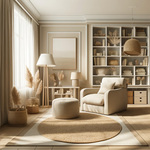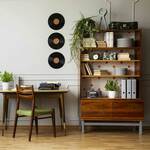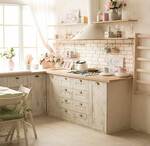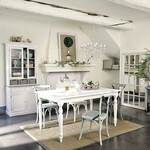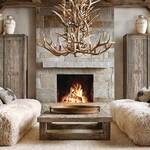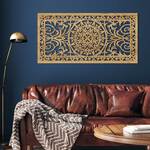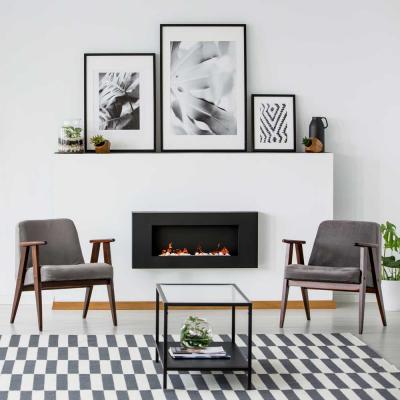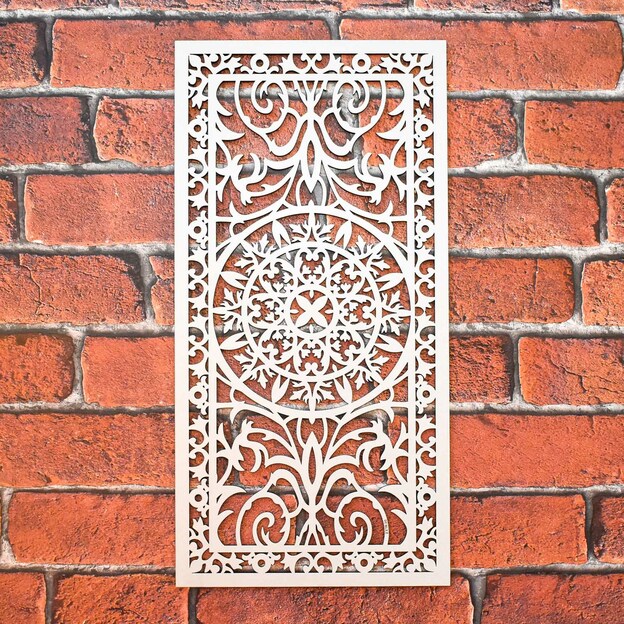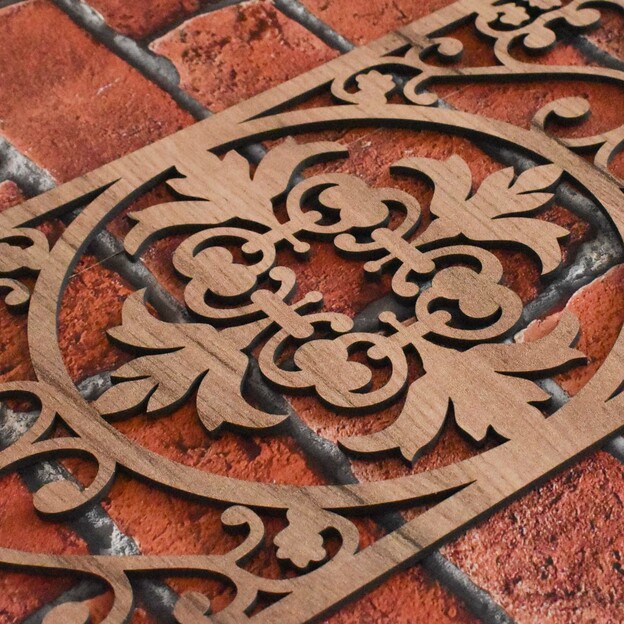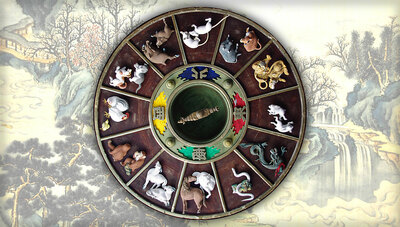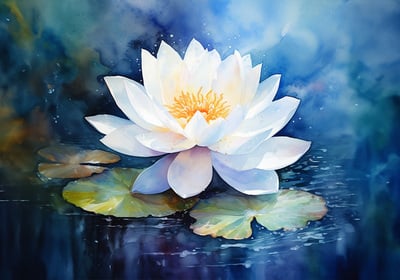
Oriental Living Style – Architecture of East Asia
We all strive to feel as comfortable and cozy as possible in our homes or apartments. Sometimes, achieving the desired effect can be quite challenging. However, it’s not impossible. All you need to do is find a style that perfectly suits you, and then it's just a matter of bringing it to life. If you’re a fan of the Orient, the following style is the perfect choice for you.
In this article, you will read about:
- The History and Divisions of Oriental Style
- Key Features of Oriental Style
- Characteristics of Oriental Style
- Where to Use It in Your Home
- Decorations in Oriental Living Style
1. The History and Divisions of Oriental Style
Historically, oriental style referred to the artistic and functional qualities of items from East Asian countries. This often included products from China, Japan, and nearby regions such as Vietnam and Thailand.
Over time, as the influence of Asian culture became more prominent in Western design, this term took on a broader scope. In the modern world, oriental design commonly describes products whose art or function is inspired primarily by Asian cultures, regardless of where they were made. Today, oriental design includes common design elements that can be found in many Eastern countries.
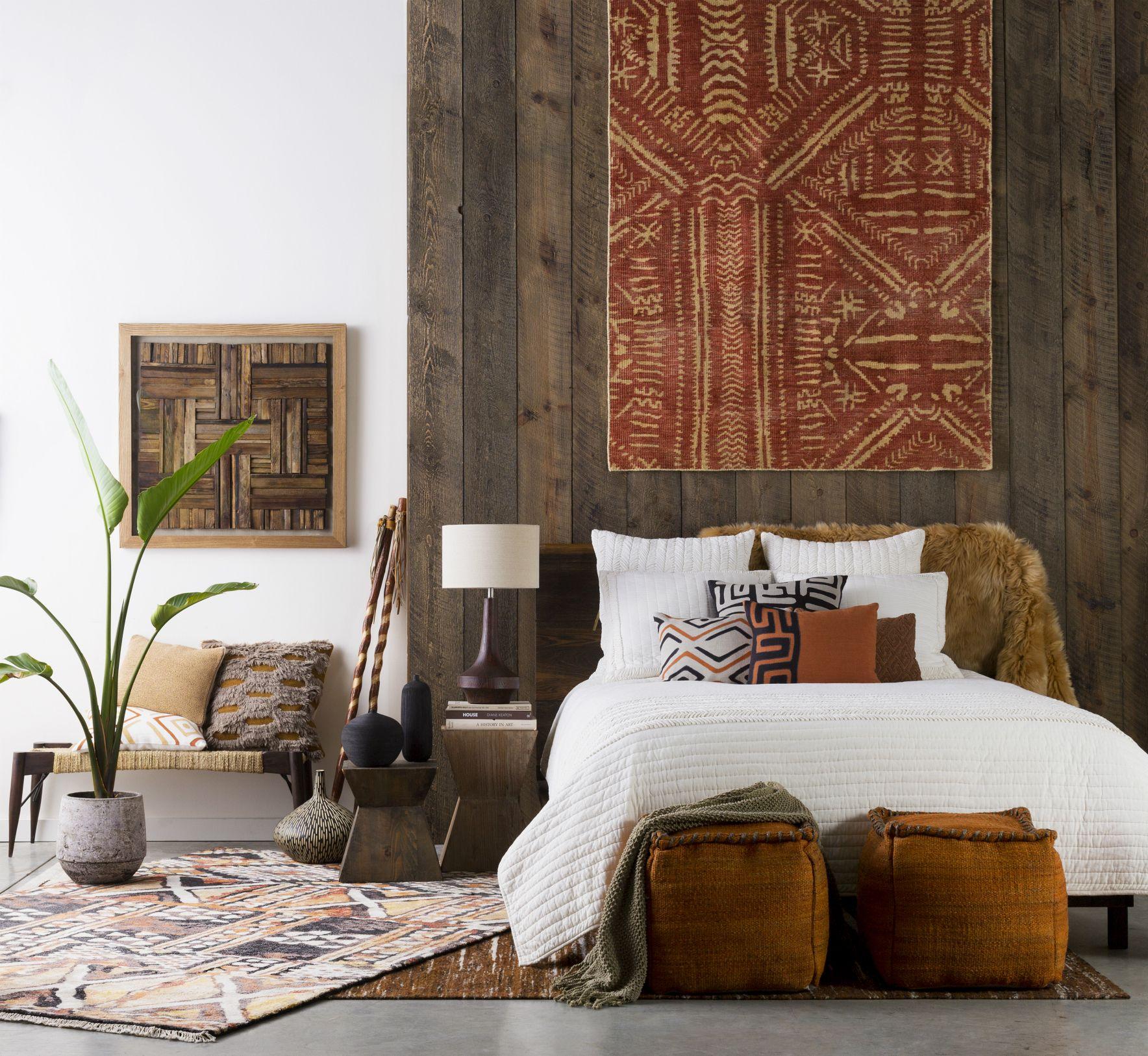 Source: pinterest.com
Source: pinterest.com
Tracking the influence and popularity of oriental style involves understanding the impact of Asian culture itself. In East Asia, much of the decoration and inspiration can be traced back to the history of China, one of the oldest and most influential civilizations. During the early histories of other East Asian cultures, including Japan and Korea, Chinese influence is evident.
On the other side of Asia, many cultures can trace their roots to India, especially with the spread of Sanskrit. This cultural development helped propagate "Indian" styles and influences across other culturally significant nations like Sri Lanka and Thailand. For example, Nepal reflects a blend of Chinese and Indian influence.
In these early civilizations, design, as we perceive it today, was often reserved for the wealthy. Members of society frequently considered Western styles as elegant and refined, preferring them over their own. The oriental design we know was often shaped by two main factors: environment and beliefs.
Environmental differences between Europe and Asia have profoundly influenced design contrasts. This is most visible in the materials used, but it can also be observed in the complex construction of homes. Meanwhile, beliefs based on religion and how one should live life have also directed Asian design toward distinct paths compared to the West.
1.1 Oriental Style in India
Indian-inspired oriental living is characterized by rich ornamental decoration, religious motifs, and furniture made of dark solid wood. Dining typically occurs at a low table without chairs, with people seated on the floor around the table on large cushions. This style also features vibrant colors and hand-woven carpets.
1.2 Oriental Style in China
If you desire a colorful home, consider decorating it in the Chinese oriental style. This style might appear overly ornate or gaudy to some, mainly due to its typical motifs of dragons, Chinese characters, or circles. Additionally, it commonly features Chinese porcelain or paper and fabric lanterns, often adorned with tassels.
Wooden decorations by DUBLEZ inspired by Chinese oriental style:
1.3 Oriental Style in Africa
When discussing the African oriental style, we refer to a style inspired by wild nature and strong contrasts. It also includes handcrafted ceramics, luxurious animal patterns, and furs, which are characteristic of the broader oriental style.
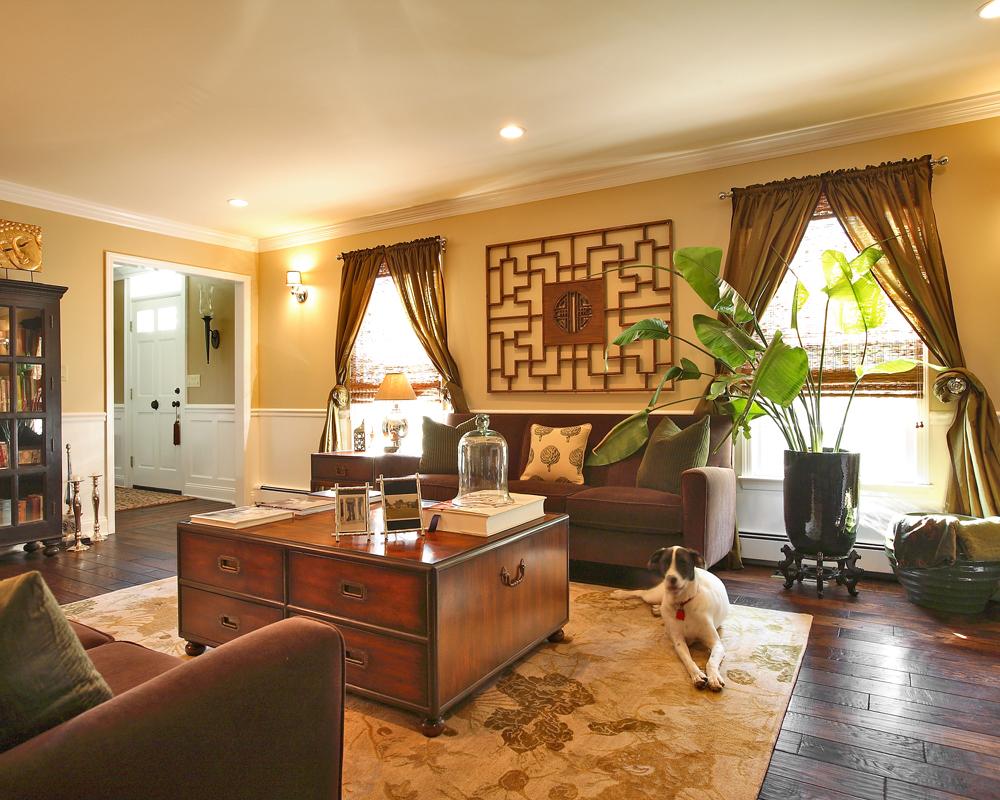
Source: iStock.com
The beauty of oriental style lies in its ability to incorporate elements that resonate with individuals, allowing them to realize their vision at home. Whether you prefer subtle minimalism, luxurious opulence, or something in between, you will find what you’ve admired during your travels.
Wooden decorations by DUBLEZ inspired by African oriental style:
2. Key Features of Oriental Style
Wood and Porcelain
Historic Asian design often relied on two primary materials: wood and porcelain. While wood is a staple of antique furniture worldwide, Asian pieces are known for their intricate details. Additionally, lacquer, used to achieve a durable and glossy finish on wooden products, originated in Asia, specifically in India and China. Porcelain has had perhaps the most significant influence of Asian culture on global design, remaining a closely guarded Chinese secret for centuries before reaching Europe.
Silk
Silk, first developed in China, gradually made its way westward through India before reaching Europe. Both India and China remain the world’s largest producers of silk, where it is still regarded as a luxurious material.
Calligraphy
Calligraphy, the art of writing, is integral to many cultures globally. However, in East Asia, it is highly regarded as an art form. In countries like China, Korea, and Japan, calligraphy plays a significant role in modern art. These works are typically created on paper with black ink, with various subtleties giving each piece a unique personality. Asian calligraphy traces its roots back to ancient Chinese writings originally crafted on hard surfaces.
Flowers
Throughout history, flowers have been used as a powerful symbol in many civilizations. The flowers in oriental design differ significantly and create a distinct aesthetic. Notable examples include the lotus flower, which carries strong Buddhist connotations, and plum or cherry blossoms, prominent in Chinese and Japanese art. These often symbolize beauty and the fleeting nature of human life.
Animals
Every culture associates itself with specific animals, but certain animals are more common in oriental design. The Chinese dragon is perhaps the most iconic, popularized in both Eastern and Western cultures. In Indian tradition, elephants hold significant religious and cultural symbolism, representing strength. In East Asia, the crane symbolizes harmony and longevity.
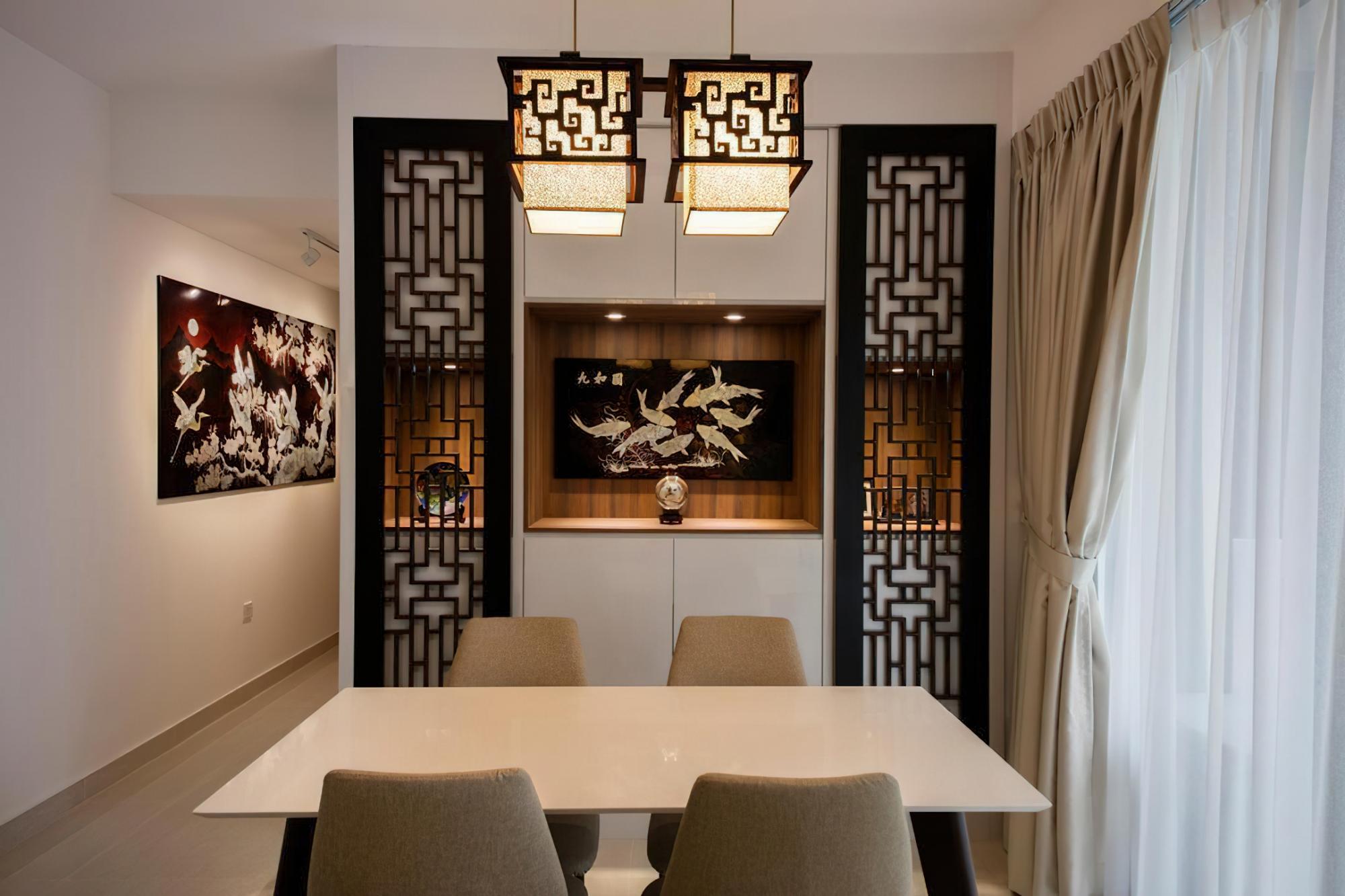
Source: Qanvast.com
3. Characteristics of Oriental Style
The hallmark of oriental style is simplicity, which dominates the overall design. It avoids excessive decoration, an abundance of ornaments, or poorly matched color combinations. Large, expansive windows characteristic of this style make it ideal for homes surrounded by nature, allowing residents to fully appreciate their surroundings. Walls are best left free of wallpapers or other “decorative” elements.
Oriental style embraces Chinese and Japanese minimalism, with the main difference being their use of color. Interiors styled “Chinese” are richer in color, featuring shades of red, deep blue, lotus yellow, and gold. Japanese style is simpler and more restrained, with a foundation of black and white, occasionally accented with crimson.
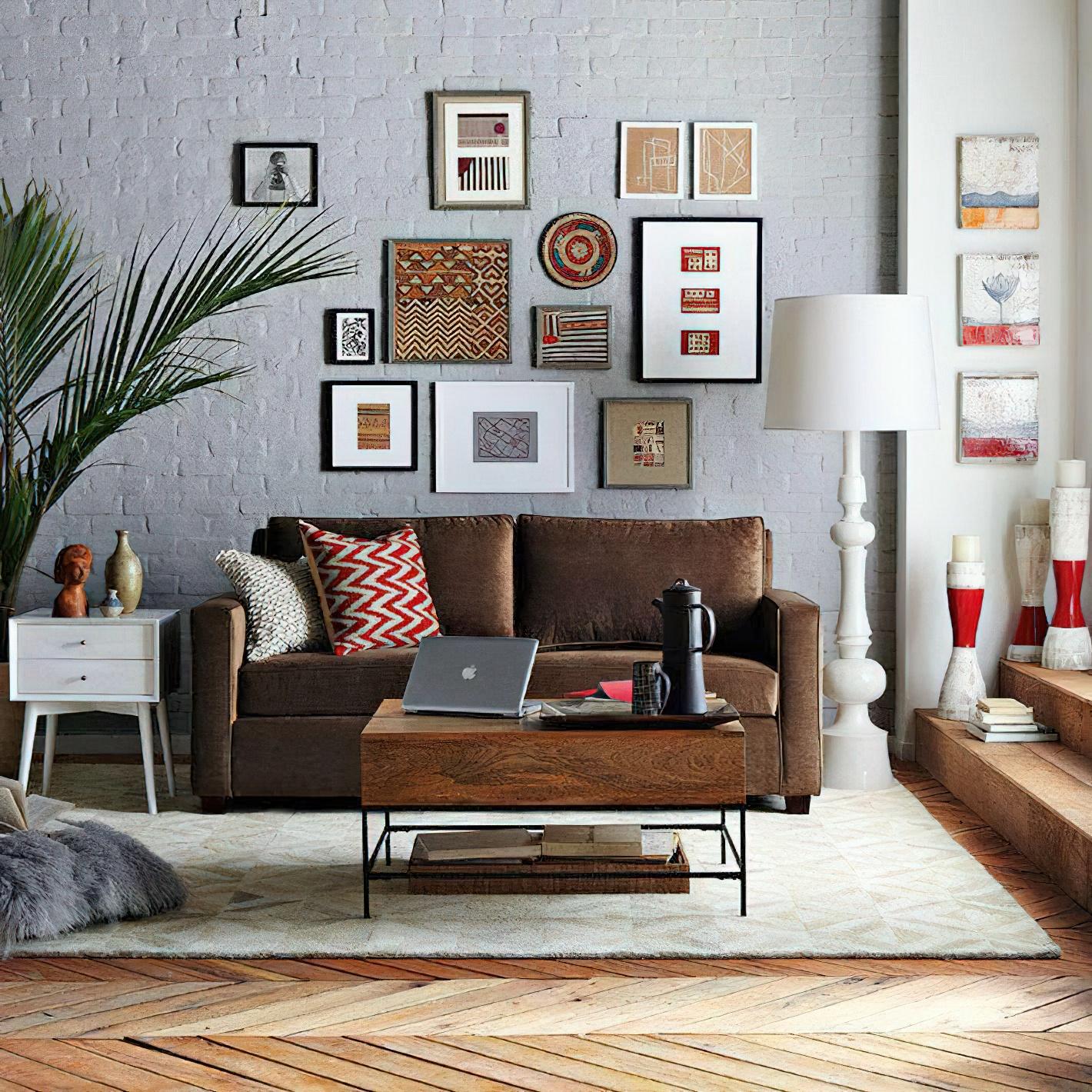
Source: pinterest.com
4. Where to Use It in Your Home
In oriental style, walls serve as a mere "frame" for the space, so choose soft and understated colors. If you want to experiment, opt for one wall in a different color, ensuring it doesn’t disrupt the overall harmony of the room. For a modern take on oriental style, you can choose wooden floors or refurbish aged parquet for a timeless element.
Oriental style can be used throughout the home, including the kitchen, where functionality and practicality take precedence. Everything should be arranged logically, with ample workspace.
Kitchen units can be made of dark wood or glossy white or black laminate. The oriental touch comes from selecting the right tableware (square white or black porcelain) and bamboo or rattan placemats.
An oriental living room is sparingly furnished but very comfortable. Minimal low furniture, a boxy sofa without cushions, and a low coffee table define the style. Decorations may include paper lampshades, screens, or simple black and white ceramics.
The standout feature of an oriental living room is a low table, typically surrounded by decorative cushions on the floor. This seating arrangement is quintessentially Oriental. If you prefer traditional sofas, choose a lower model to ensure comfort when seated at the low table.
A bedroom designed in oriental style is exclusively for sleeping, with minimal carefully selected decorations to ensure restful relaxation. Key pieces include a low bed with an orthopedic mattress, a nightstand with clean lines, and built-in closets to maintain perfect order.
The bathroom is a place for relaxation and cleansing. It often features a sunken bathtub or a low bathtub with a small step. If space is limited, a shower cubicle can be used instead.
To create a calming and harmonious atmosphere, choose the right tiles and flooring. Wooden floors or slatted wood panels are also suitable. Bathroom furniture should have clean, simple lines.
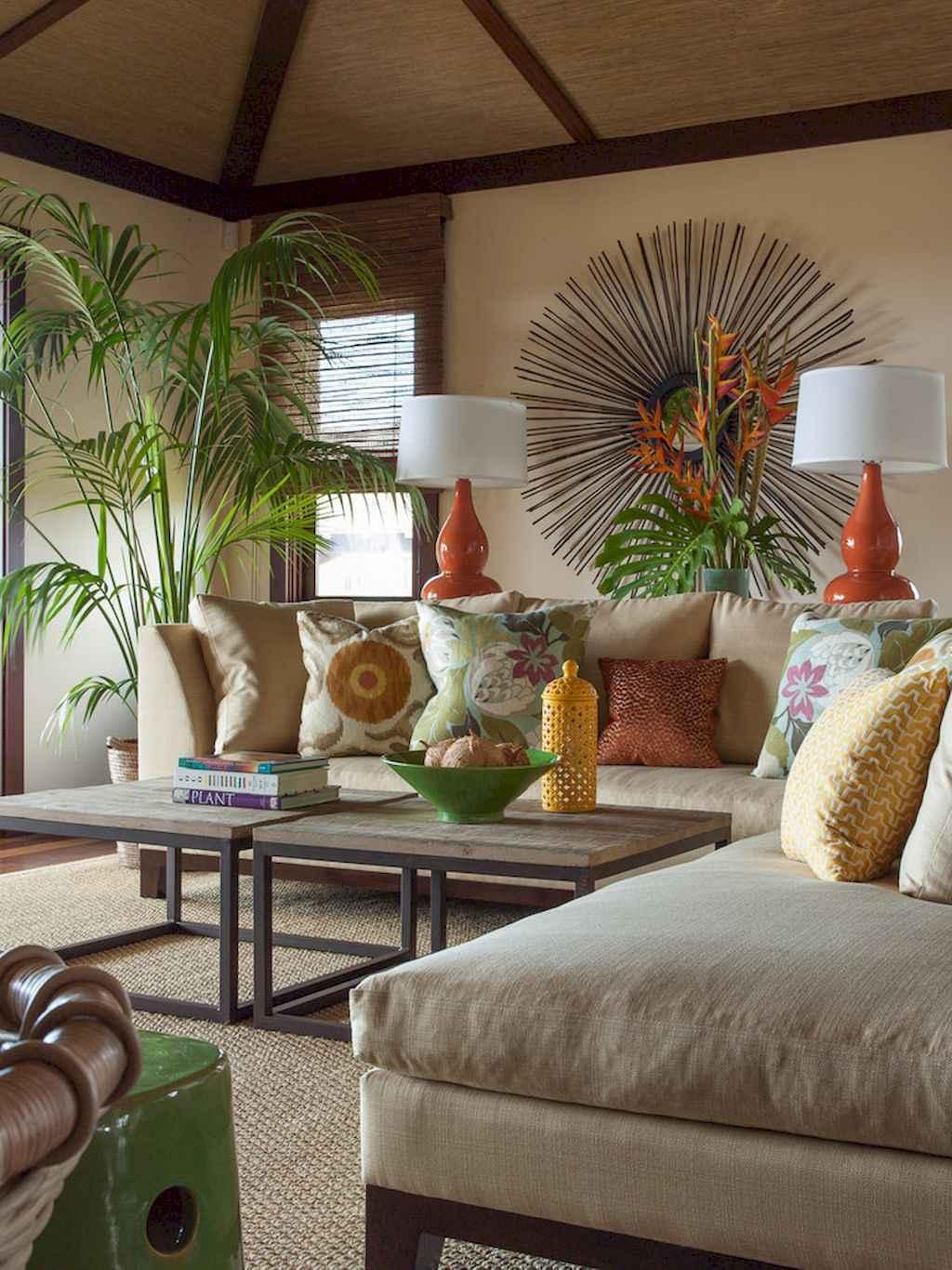
Source: pinterest.com
5. Decorations in Oriental Living Style
When it comes to accessories, “natural decorations” enhance the overall look. Colorful candles or wooden figurines add an exotic flair to interiors and exteriors. However, balance is key. There’s a fine line between a tasteful, subtle oriental style and an overdecorated, kitschy look that disrupts harmony.
Pastel shades like beige, pink, or green can also create an oriental atmosphere. Designing an interior in an oriental spirit results in a harmonious environment with minimal furniture, accessories, and textiles. You can focus on either traditional or modern oriental living styles.
You can explore the complete range of oriental decorations by DUBLEZ HERE.
Modern oriental style is characterized by white or light gray walls, providing a perfect backdrop for simple furniture. For a softer look, consider painting the walls dusty pink or pale green. Accessories like silver accents, paper screens, or lampshades suit this style well.
Traditional oriental style allows for experimenting with patterns and vibrant colors, often combined with gold. Shades of red, blue, jade green, or lotus pink are common. In such interiors, you can incorporate gold accents, embroidered carpets, or tapestries, as well as hand-painted ceramics. You can draw inspiration from Chinese motifs such as birds, dragons, or Chinese characters—though be mindful to avoid unintentionally displaying a recipe for noodle soup.
For oriental interiors, opt for low, simple furniture made of very dark or very light wood. Cherry wood tones are also suitable. To maintain harmony and spaciousness, furnish rooms minimally, ideally with multifunctional furniture.
An oriental-style interior looks best when kept impeccably tidy. Laminated or tiled floors contribute to this, but if you prefer carpets, choose natural shades like cream, dark gray, or sand. Curtains and drapes are rarely used; wooden blinds, Roman fabric shades, or Japanese-style screens are more fitting. These should be light and sheer, almost like a cobweb.










































